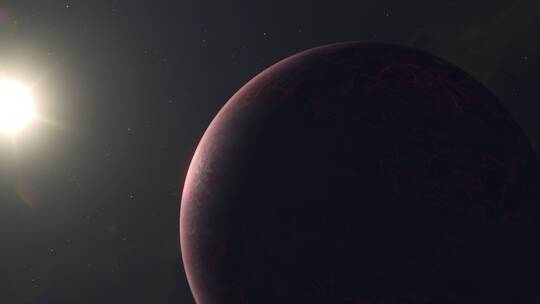About 322 light-years away from Earth, there is an extreme planet called WASP-189b orbiting one of the hottest stars in the universe, HD 133112. WASP-189b approaches its star at a distance twenty times closer than we are to the sun, with daytime temperatures reaching 5,792 degrees Fahrenheit (3,200 degrees Celsius). This scorching gas giant is also about 1.5 times the size of Jupiter, meaning it could hold 1,950 Earth-sized planets within it. Although it is completely uninhabitable (at least as we understand it), WASP-189b is the first exoplanet where scientists have been able to explore distinct atmospheric layers, each with its unique chemical compositions and characteristics.
Since its discovery in 2018, scientists have reasonably concluded that WASP-189b does not resemble any celestial body in our solar system. However, in a research paper published in the journal Nature Astronomy, a team of scientists found a way to connect Earth with this distant cosmic neighbor, suggesting that the atmosphere of one of the most extreme known planets may also have distinct layers, albeit with very different properties compared to our own.
Here on Earth, we have a layer of the atmosphere called the troposphere, which starts at sea level and contains a large amount of water vapor, where clouds and weather phenomena like rain and snow occur. Above that, we have the stratosphere, home to the ozone layer, which protects us from ultraviolet solar radiation. Jens Hoejmaker, an astrophysicist at Lund University and co-author of the study, stated, "In the past, astronomers often assumed that the atmospheres of exoplanets existed as a uniform layer and tried to understand them as such."
However, when analyzing WASP-189b by measuring the starlight passing through the atmosphere of this extremely hot exoplanet, using the HARPS spectrograph at the La Silla Observatory in Chile, Hoejmaker and his colleagues found a unique chemical signature that upends our understanding of planetary atmospheres. He indicated that the atmosphere of this distant celestial body may contain layers similar to those on Earth.
Bibiana Brinoth, an astrophysicist at Lund University and the lead author of the study, explained that "the gases in the planet's atmosphere absorb some starlight, similar to how ozone absorbs some sunlight in Earth's atmosphere, thus leaving their distinctive fingerprints." During their observations, WASP-189b emitted signals of iron, chromium, vanadium, magnesium, and manganese. However, importantly, Brinoth noted, "In our analysis, we saw that the fingerprints of various gases changed slightly compared to our expectations. We believe that strong winds and other processes could generate these changes." These variations were observed across the range of detected elements, mirroring how water vapor and ozone on Earth are differently affected by natural processes due to atmospheric layers, suggesting that layers exist on WASP-189b as well.
The team also discovered remnants of titanium oxide in the protective atmosphere of WASP-189b. Kevin Heng, an astrophysicist at the University of Bern and co-author of the study, stated, "Titanium oxide absorbs shortwave radiation, such as ultraviolet rays. Its discovery could indicate a layer in WASP-189b's atmosphere that interacts with starlight similarly to how the ozone layer works on Earth." This suggests that WASP-189b may have its own ozone layer. Hoejmaker concluded, "Our results show that even the atmospheres of giant gas planets exposed to intense radiation have complex three-dimensional structures."




